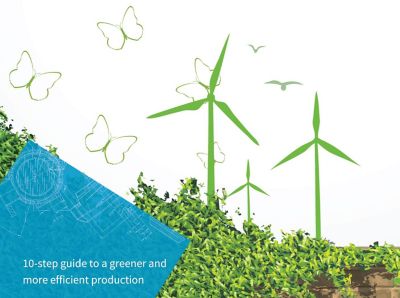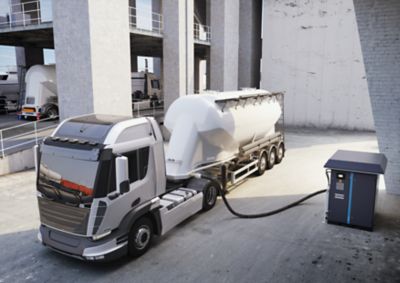為貴企業選擇合適的氮氣供應
採購氮氣供應時,通常會選擇工業氣瓶供應。然而,還有更高效的替代方案,主要是使用 PSA 或薄膜產生器進行現場生產。本文涵蓋了各種選項,同時強調了每種選項的優點。
傳統供應方法:是否可靠?
在現今的工業環境中, 安全一致的氮氣供應至關重要。隨著全球物流面臨壓力,即使是輕微的交貨中斷也可能導致生產停止。與此同時,氮氣價格上升,食品包裝、金屬製造、化學品和電子產品等產業的需求持續增加。
有關氣體純度和工作場所安全的法規也越來越嚴格。許多製造商現在都採用即時生產模式,氣體供應延遲或不一致會直接影響產品品質、安全性和交付時間表。
這就是為什麼確保氮氣供應的可用性和可靠性不僅僅是關於便利性。這是保持營運順暢、控制成本並保持輸出一致的關鍵因素。
您的天然氣供應受到什麼威脅?
即使是最有組織的營運,當其氣體供應取決於外部來源時,也會面臨風險。以下是最常見的威脅:
物流延誤 : 道路封閉、天氣狀況或運輸問題很容易干擾交貨時間表。
瓶子缺貨:瓶子供應取決於供應商的供應情況。突然短缺或錯過交貨可能會使您的生產面臨風險。
散裝交付排程 : 協調液態氮交付需要精確的時間。任何延遲或通訊錯誤都可能導致停機或緊急訂單。
儲存損失:現場儲存的液態氮會隨著時間逐漸蒸發。這些損失會減少可用的有效量,並且通常需要更頻繁地補充。
搬運和運輸的安全風險:移動和存放高壓鋼瓶或低溫槽會帶來物理風險和法規責任,可能會增加操作的複雜性。
第三方供應方法:它們有多可靠?
瓶裝氮氣
提到的第一個選擇是從場外生產設施購買氮氣瓶。這個過程非常簡單。 您為您的應用訂購所需的氮氣量 ,供應商會以大型重型瓶子交付。
低溫氮氣工廠產生的 N₂O₂ 會轉化為氣體,並在極高壓力(300 bar)下裝瓶。因此,大量氮氣會儲存在相對較小的瓶子中。然而,為了承受高壓,容器相當笨重,增加了重量。
使用後,這些瓶子被放置在架子上,在那裡存放以便取出, 需要額外的存放。
優勢:
⸰ 適用於氮氣消耗量低的設施的簡單解決方案。
⸰ 為峰值流量提供隨時可用的氮氣。
⸰ 安裝簡單。
缺點:
- 由於瓶子的大小和重量,運輸不環保。
- 工作壓力必須大於瓶壓。否則會浪費氮氣。
- 由於生產和運輸成本,價格相對較高。
- 需要特殊的瓶架切換系統以避免工作流程中斷。
- 安全問題(重鋼搬運、高壓)。
- 建立對氮氣供應商的依賴。
- 不適用於高燃氣消耗量。
液態大量氮氣供應
涉及第三方的第二個選項是安裝由天然氣公司定期填充的液態氮儲存槽。這些桶槽可向供應商租用或購買。此外,氣態氮氣使用時需要使用蒸發器。
蒸發器將液態氮轉化為氮氣。就像瓶裝氮氣一樣,液態氮供應需要運輸。然而,在這種情況下,它是由隔熱油罐車運送的。然後將液態氮從卡車泵送到絕緣儲存槽中。
也可訂購較小罐裝的液態氮,以滿足低消耗情況。這些小型桶槽稱為杜瓦瓶。此外,液態氮與瓶裝氮氣一樣,是由低溫氮氣工廠生產的。
優勢:
⸰ 為峰值流量提供隨時可用的氮氣。
⸰ 通常比瓶裝氮氣更具成本效益。
⸰ 容量調整可輕鬆配合不斷變化的氮氣需求。
缺點:
- 桶槽絕緣效果並不完美。液態氣體會加熱並蒸發,稱為蒸發損失。*
- 與天然氣公司的長期合約是常見的(通常為 5-7 年)。
- 需要額外的設置,包括特殊基座和蒸發器。
- 不符合環保要求。
- 安全問題(液態氮溫度為 -196 °C,使用液態氮時存在凍傷風險)。
- 當氮氣消耗量高於標稱值或室外溫度較低時,蒸發器可能會結凍。
* 蒸發損失是浪費。每當您使用的氮氣量低於儲氣槽容量時,壓力都會上升,導致蒸發損失。如果完全不消耗氣體,這種浪費高達每天油箱剩餘容量的 1%。為了抵消這些損失,必須定期(通常每週一次)重新填充桶槽。
現場氮氣製造
對於可靠且連續的氮氣供應,現場產生被廣泛認為是最可靠的選項。壓力波動吸附 (PSA) 和薄膜產生器等技術可根據您的需求提供高效、不間斷的氮氣生產。
用於氮氣的薄膜或 PSA 產生器
與以前採購和接收氮氣的方法不同,產生氮氣不涉及低溫製程。因此,薄膜或壓力波動吸附 (PSA) 氮氣產生器都 不需要極端溫度。這些類型的設備透過其他方式將空氣分離到其組件中。
雖然 PSA 和薄膜是兩種非常不同的技術 ,但兩者都需要壓縮空氣流才能運作。此外,由於這兩個產生器不使用低溫,因此產生的氣體成分不相同。
低溫氮氣具有固定的高純度等級。市售產生器的氮氣純度可根據您的偏好進行調整。值得注意的是,使用 PSA 和薄膜產生器達到與低溫產生氮氣相同的純度等級是低效率的。
有了這些機器, 更高的純度需要更高的功率, 導致運營成本增加。即便如此,PSA 與薄膜產生器純度等級對大多數應用而言都足夠。使用者可以製造適合其應用的適當純度氮氣,而不是最高純度氮氣,藉此降低每單位氮氣的成本。您可以在此處閱讀更多有關氮氣純度的資訊。
現場氮氣產生的優勢:
⸰ 一致性和控制性 : 現場產生可根據特定應用量身打造一致的純度等級。
⸰ 供應獨立性:減 少對外部供應商的依賴,將潛在的延遲或供應不一致降至最低。
⸰ 營運效率 : 只產生所需量的氣體,有助於降低整體營運成本
⸰ 彈性:可自訂的解決方案,純度從 95-99.5%(使用薄膜產生器)到高達 99.9995%(使用 PSA 系統)
缺點:
- 需要針對峰值流量採取特殊措施(例如緩衝罐、高壓緩衝罐、液態氣體緩衝罐)。
- 與液體或瓶裝供應相比,不易適應變化的氮氣需求。
- 需要進行額外的維護工作。
比較可靠的氮氣供應方法
|
薄膜產生器 |
PSA 發電機 |
可達成的純度 |
UP TO 99.9% |
UP TO 99.999% |
效率 |
高 |
更高 |
效能與溫度之比較 |
在高溫時較高。* |
溫度過高時降低 |
系統佔用面積 |
SMALL |
中 |
啟動速度 |
秒 |
分鐘 |
水(蒸汽)敏感度 |
無液體水 |
乾燥空氣 |
| 油敏感性 | 不允許(< 0.01mg/m³) |
不允許(< 0.01mg/m³) |
噪音等級 |
非常低 |
具有吹淨峰值的中等量 |
與我們合作,滿足您的氮氣產生器需求
確定氮氣產生器的合適尺寸和容量需要徹底評估各種因素。在決定之前,請先進行詳細分析或諮詢我們的專家。
我們瞭解這個過程可能具有挑戰性,我們隨時準備為您提供幫助。我們的專家可以幫助您找到最適合您最複雜工業挑戰的解決方案。我們會回答您有關尺寸、安裝或持續支援的所有問題。
相關文章
氮氣或氧氣純度如何影響成本
10 十月, 2025
絕大多數的專業氮氣和氧氣應用不需要極高純度的氣體,因此這是企業可以實現顯著節省的領域。因為根據您的需求量身打造氣體純度始終是最佳且最有效率的解決方案。


